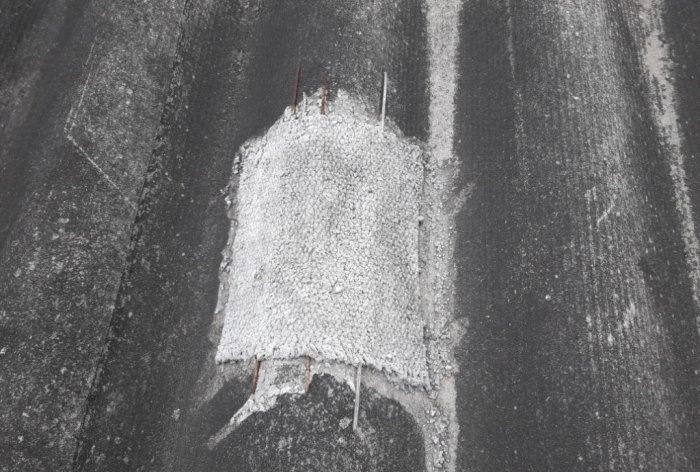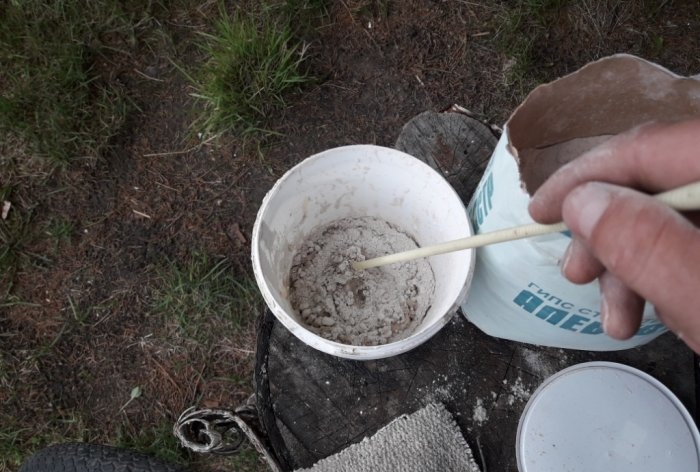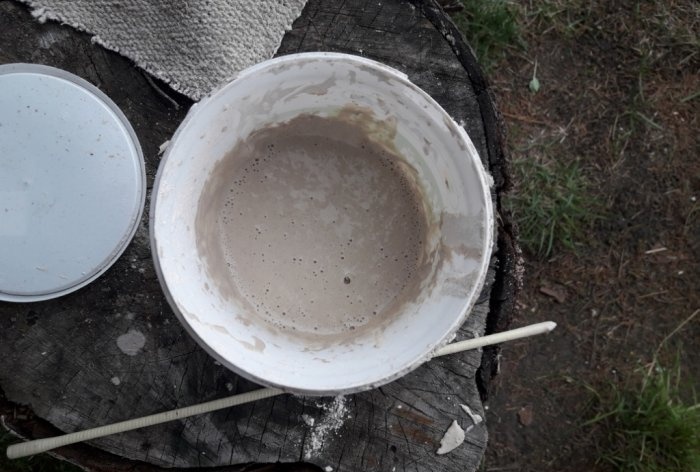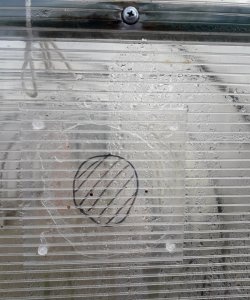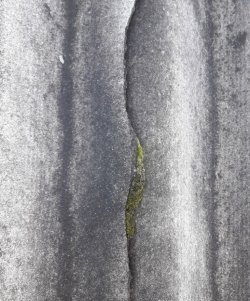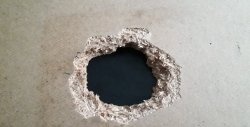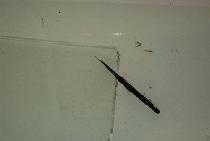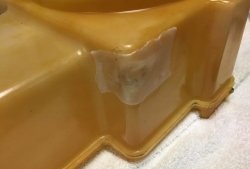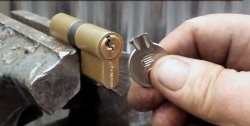Where the holes in the slate come from, when there are no trees or tall buildings nearby from which something could fall, remains a mystery to me personally. And yet it is a fact. Nowadays, many varieties of various adhesives are sold for a wide variety of materials, including slate. However, many of them are not as effective as we would like. Some flow down from the roof along with the rain during a downpour, others, at best in the spring, along with the snow. In the end, I decided to make the glue myself, with my own hands. The glue turned out good. Patches using it successfully survived the winter and are still doing their job. Having crawled the roof in the spring in search of new “surprises”, and was surprised to find the patches intact, I decided to share some useful advice. This is what the one year old patch looked like.
It was not without difficulty that I tore it off to clearly show how to install a new one.
Will need
- PVA glue.
- Alabaster.
- Asbestos fabric.
- Bicycle wheel spokes (or similar wire).
- Sandpaper for wood (coarse grain).
Fixing a hole in the slate
Our patch will be reinforced.Therefore, first we will prepare knitting needles (if you don’t have them, cut steel wire) and asbestos fabric. Now let's dilute the glue itself. Pour 180-200 grams of PVA glue into the bowl in which we will knead. Next, add alabaster in small portions, stirring continuously, until the mass acquires the consistency of thick sour cream.
After the mixture is ready and there are no lumps left in it, we immerse the prepared asbestos patch into the mixture.
You can leave the mixture alone for ten minutes, let it brew. During this time, we will prepare the site for the future patch. Using coarse sandpaper, we clean the areas around the hole to the entire area where the mixture will lie.
Lubricate the sanded surface with PVA glue. Now we take two or three knitting needles and place them on the hole, along the edges of the slate.
On top, on the knitting needles, we apply an asbestos patch soaked in the mixture. Next, spread the mixture around the patch in an even layer. Level with a spatula. We close the container with the mixture with a lid so that it does not start to dry out and wait an hour and a half until the patch sets slightly. Then we fix the patch with a second layer, not too thick.
You can lightly sprinkle alabaster on top. It will take a day to dry, so before you start work, find out the weather forecast for the next day, since even light precipitation can ruin all your work. But then you can safely forget about the hole until you decide to change the covering on the roof.

